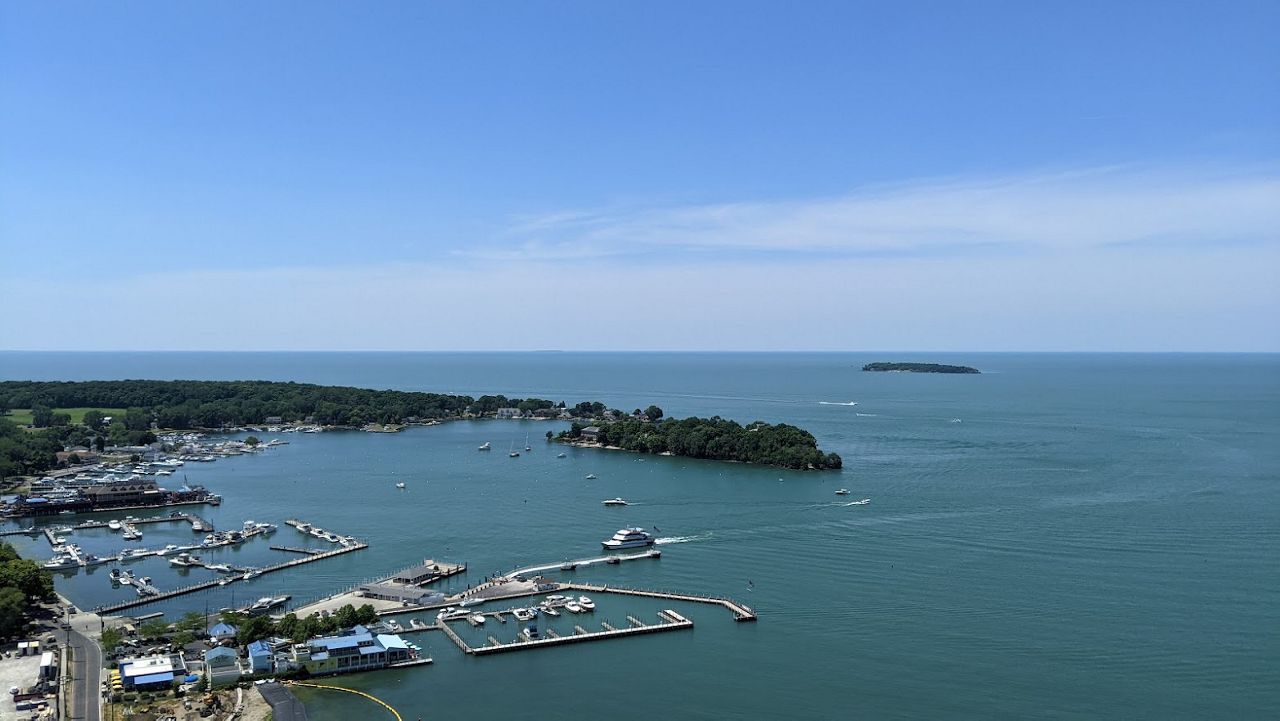June 1 marks the start of meteorological summer. The three-month stretch of June, July and August is the hottest part of the calendar year and often the wettest in Ohio.
Temperatures are consistently warm and humidity levels increase. Rainfall can be a bit more variable, with thunderstorms accompanied by heavy downpours and periods of drought all possible.
Ohio’s average high temperatures are in the lower and mid-80s during summer. Average low temperatures are in the lower 60s.
A typical summer, however, features a wide range in temperatures. We routinely reach the 70s, 80s and 90s. But there can be an occasional cool day in the 60s or an incredibly hot day or two in the triple digits.
Most of us can remember an intense heat wave or a consistently hot summer. Similarly, it’s easy to recall a time when we dealt with a strong summer storm or flooding rains.
Our summer weather can sometimes be notorious, such as the devastating Shadyside flash flood of 1990 or the damaging derechos of 1969 and 2012.
In many of our larger cities, weather observation sites have often kept data since the late 1800s. Since then, temperatures have soared into the 100s and plummeted below freezing during the summer.
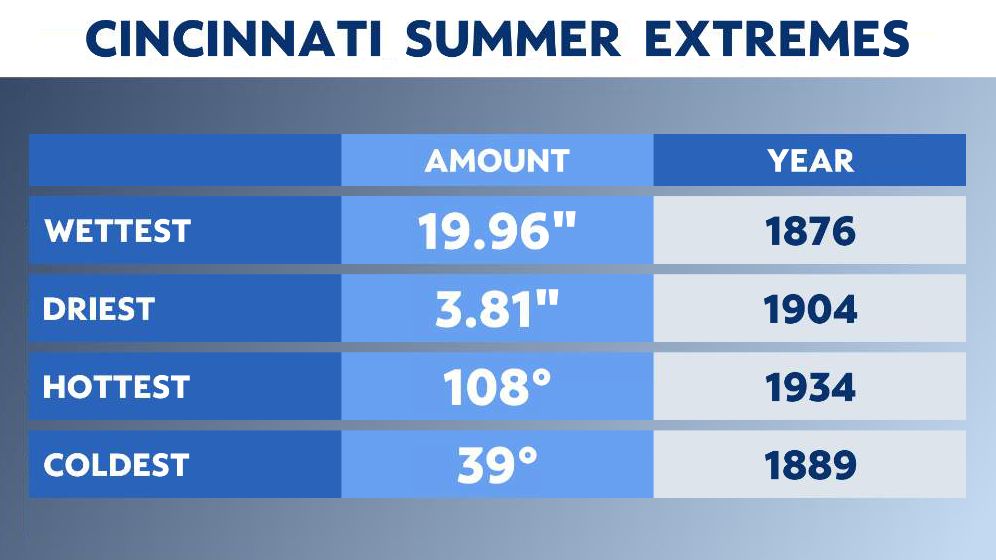
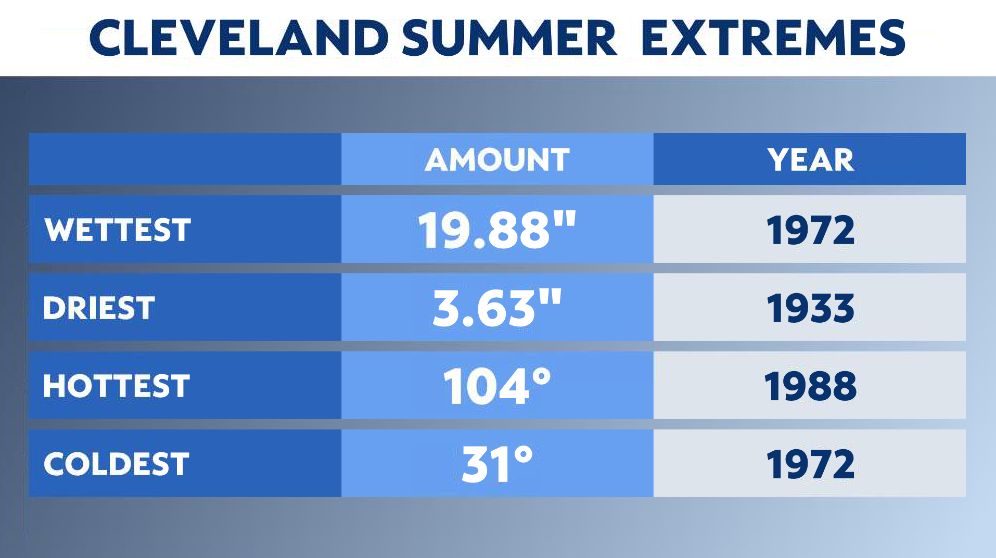
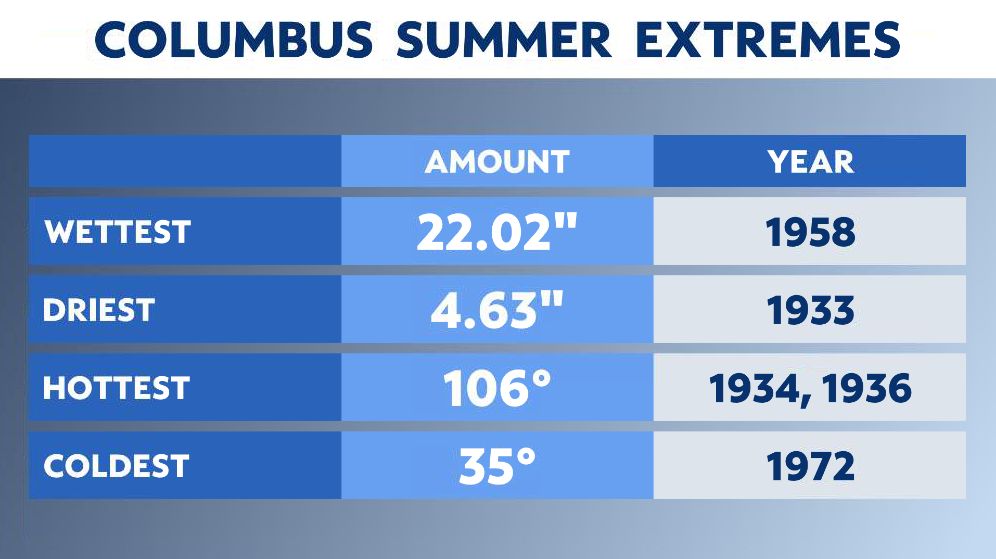
The all-time hottest temperature in Ohio occurred over 90 years ago in Gallipolis during the Dust Bowl years of the 1930s. More recently, in 2021, Mansfield observed their hottest summer season on record. The same year, Toledo had its second hottest and Akron had its third hottest summer.
Also in 2021, both Cleveland and Cincinnati had a top five wettest summer. And less than thirty years ago, the heaviest 24-hour rainfall inundated the small village of Lockington in western Ohio.
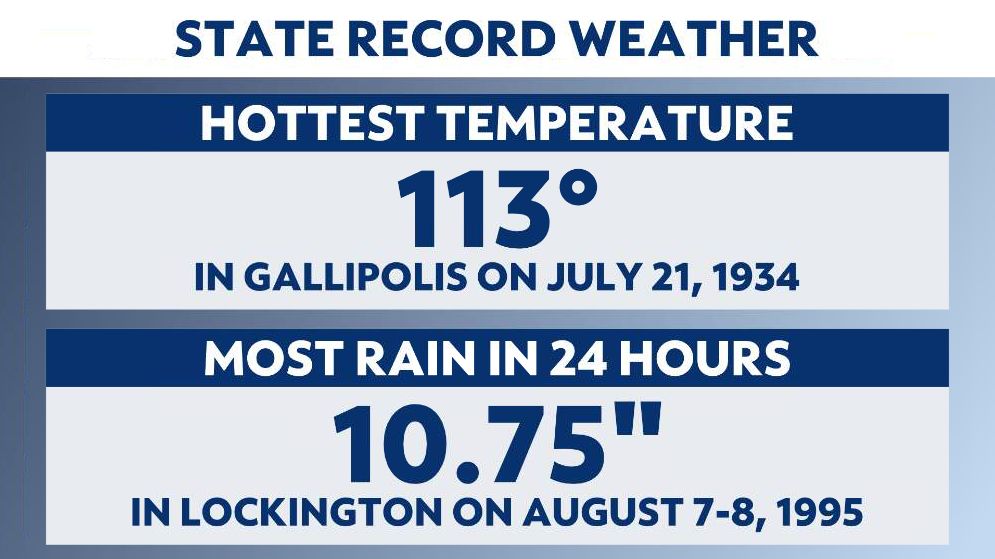
NOAA’s Climate Prediction Center (CPC) publishes weekly, monthly and seasonal outlooks. These outlooks highlight expected temperature and precipitation patterns across the U.S.
For this summer, the consensus is that Ohio will experience near normal temperatures, if not slightly above average.
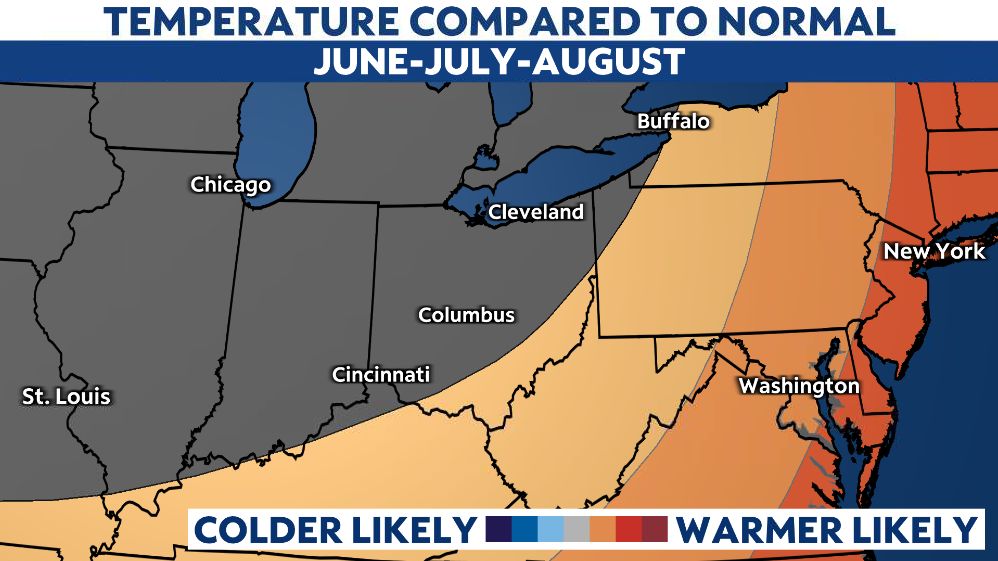
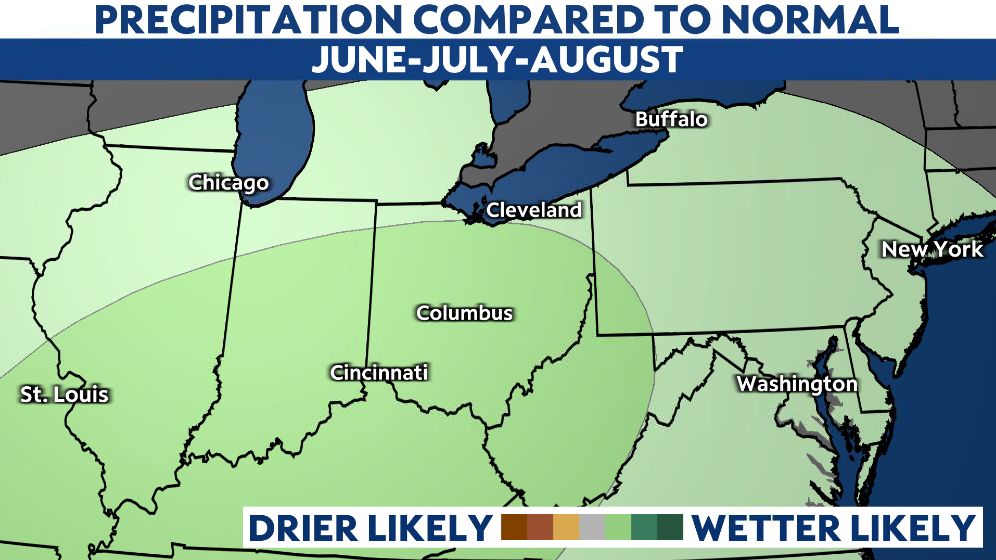
There is also a good chance for above average precipitation in the Ohio Valley and Lower Great Lakes regions.
Summer rainfall totals are much more variable than temperatures, especially from year to year and location to location. Areas of central and southern Ohio average a bit more rainfall than northern Ohio.
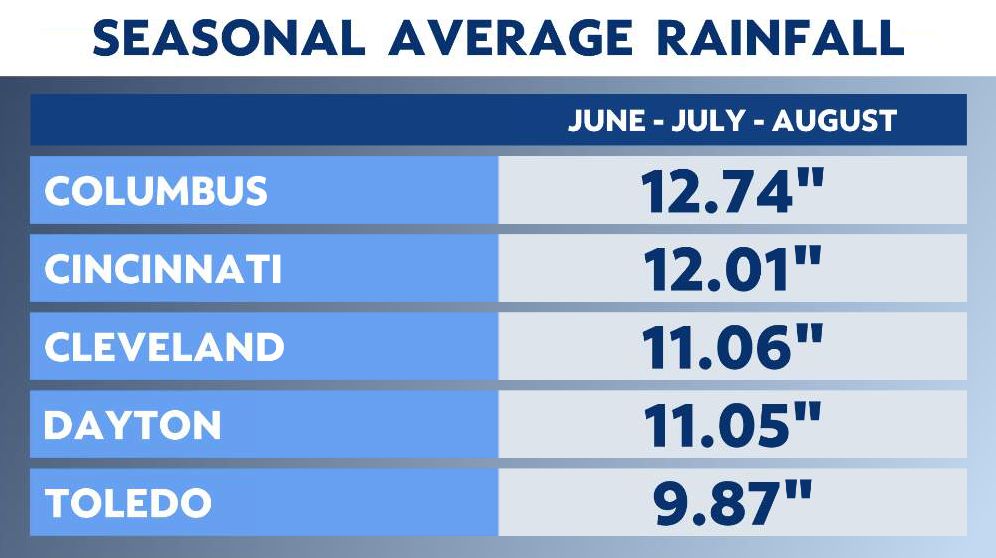
With summer upon us, be sure to monitor our daily forecast for the latest information all season long.
Our team of meteorologists dives deep into the science of weather and breaks down timely weather data and information. To view more weather and climate stories, check out our weather blogs section.



